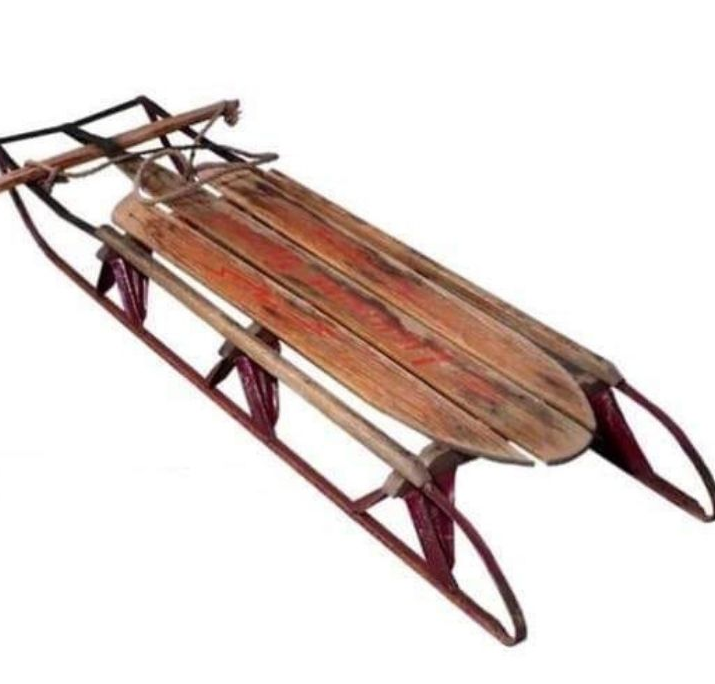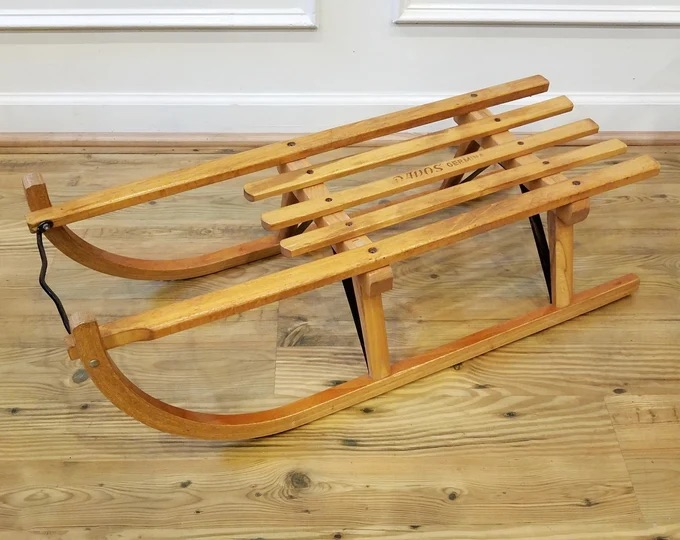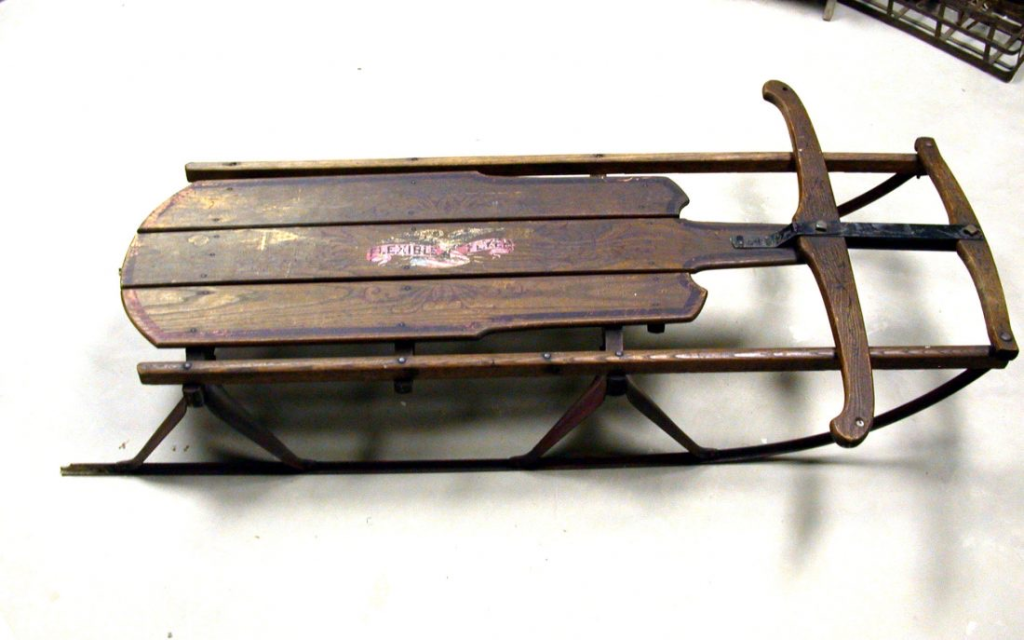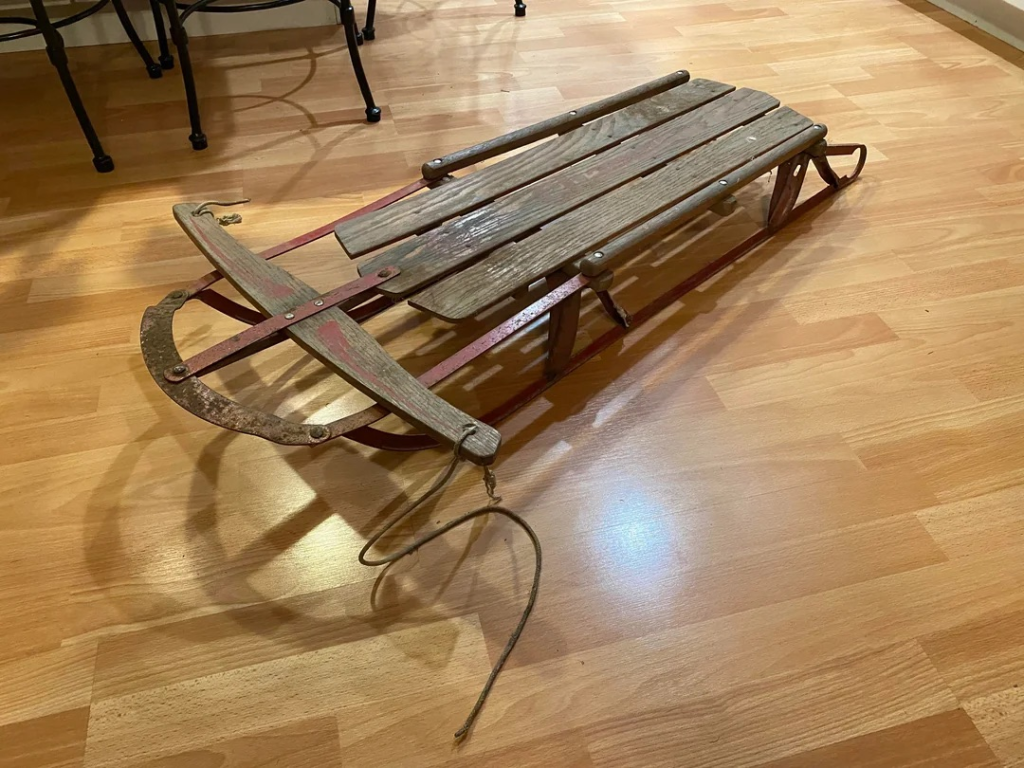If you grew up in a snowy climate during the mid-20th century, chances are you remember the magic of sledding down a hill on a vintage wooden sled. This classic piece of winter equipment was far more than just a toy; it was a gateway to adventure, creativity, and lifelong memories. From its origins to its enduring appeal, the vintage wooden sled remains a cherished symbol of simpler times.
The Origins of the Vintage Wooden Sled

The history of the vintage wooden sled dates back to the late 1800s when sled designs began evolving from basic wooden planks to the sleeker, more efficient models we recognize today. The advent of industrial manufacturing in the early 20th century allowed companies to mass-produce sleds, making them affordable and widely available to families.
One of the most iconic brands in sled manufacturing was Flexible Flyer, established in the early 1900s. Their sleds, known for their wooden slats and steel runners, quickly became synonymous with durability and performance. By the 1920s, these sleds were a household staple, passed down from generation to generation and beloved by children and parents alike.
Sledding: A Winter Tradition Like No Other
Sledding on a vintage wooden sled wasn’t just a pastime—it was an event. Children and families would bundle up in their warmest winter gear and head to the nearest hill, wooden sleds in tow. The thrill of sliding downhill, the wind biting your cheeks, and the snow flying all around created an exhilarating experience.
Kids often turned sledding into a competition, racing to see who could reach the bottom of the hill first or go the farthest. Some even experimented with different techniques, from lying flat on their stomachs for maximum speed to riding upright for better control. The climb back up the hill, dragging the heavy sled behind, only fueled their excitement for another ride.
The Ingenious Design of the Vintage Wooden Sled
What made the vintage wooden sled so enduring was its simple yet ingenious design. The wooden frame provided strength and stability, while the steel runners reduced friction, allowing for smooth gliding over snowy surfaces. The front crossbar, which could be used to steer, added a level of control that made these sleds both functional and fun.
Beyond recreational use, these sleds were also practical tools in rural settings. Families would use them to transport small loads through the snow, such as firewood or supplies. Their versatility and durability made them indispensable during the winter months.
The Role of Sleds in Childhood Adventures

For children, the vintage wooden sled was more than just a piece of equipment—it was a gateway to imagination. Snow-covered hills became racetracks, and every ride was an opportunity for adventure. Kids would invent games, challenge their friends, and create lasting memories, all centered around their sleds.
Even the downtime—like drying mittens and socks on the sled’s wooden slats or warming up near the fireplace after a long day in the snow—added to the charm. The sled wasn’t just an object; it was part of the fabric of childhood winters.
Fun Facts About the Vintage Wooden Sled

- Competitive Racing: Sledding wasn’t just for kids. In the late 19th and early 20th centuries, sled races became popular events, with participants competing for speed and skill on their vintage sleds.
- Cultural Icon: The sled became a symbol of winter nostalgia, appearing in classic films like A Christmas Story and countless holiday postcards.
- Collector’s Item: Today, vintage wooden sleds are highly sought-after collectibles. Restored models, especially those from well-known brands like Flexible Flyer, can sell for hundreds of dollars.
- Dual Purpose: In addition to sledding, many families used their wooden sleds for practical purposes, like hauling supplies through snowy terrains.
Why the Vintage Wooden Sled Still Holds Appeal
While modern sleds made of plastic or inflatable materials have taken over, the vintage wooden sled remains a beloved relic of the past. Its sturdy construction, timeless design, and connection to a bygone era give it a unique charm that modern alternatives can’t replicate.

Homeowners and designers often repurpose old wooden sleds as decorative pieces, bringing a touch of nostalgia to homes during the holiday season. Restored sleds are displayed on porches, used as festive décor, or even hung on walls as a tribute to simpler times.
The Emotional Connection to Wooden Sleds
What makes the vintage wooden sled so special isn’t just its functionality—it’s the memories it evokes. For those who grew up with one, it’s a reminder of snowy days spent outside, laughter echoing through the crisp air, and the joy of sharing winter adventures with family and friends.
The creak of the wooden slats, the metallic sound of the runners cutting through the snow, and even the weight of the sled as it was dragged uphill are all sensory memories that remain vivid for decades. These sleds weren’t just toys—they were companions in countless childhood stories.
A Winter Icon That Stands the Test of Time

Despite the rise of modern sleds, the vintage wooden sled continues to hold a special place in winter traditions. Its legacy as a durable, functional, and beautiful piece of craftsmanship has ensured its enduring appeal. Whether passed down as a family heirloom or rediscovered as a collector’s item, the sled remains a symbol of winter joy.
Conclusion: A Piece of Winter Magic
The vintage wooden sled is more than a relic of the past—it’s a timeless treasure that connects us to the magic of childhood winters. Its sturdy design, practical uses, and role in shaping winter traditions make it a beloved icon. For those lucky enough to still have one, it’s a reminder of snowy adventures, shared laughter, and the enduring joy of simple pleasures.
So, the next time you see a vintage wooden sled, take a moment to appreciate its history, its craftsmanship, and the memories it holds. It’s not just a sled—it’s a piece of winter magic that has stood the test of time.


